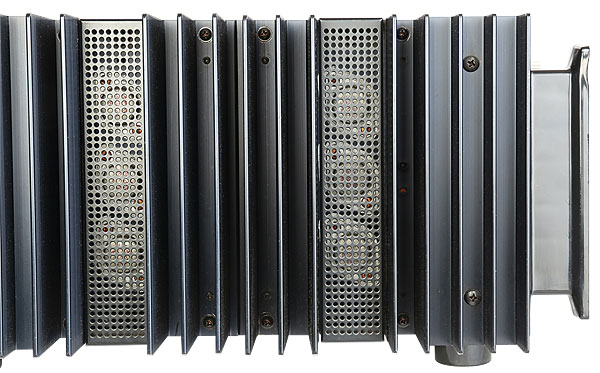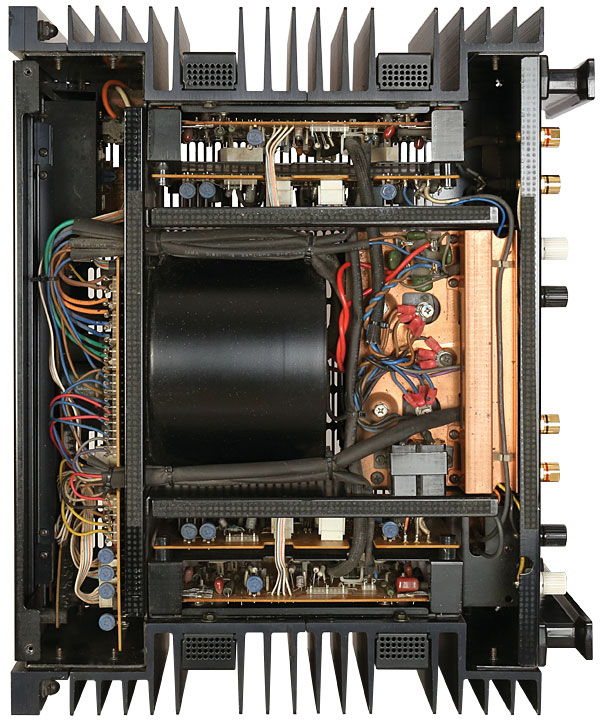Yamaha C-2a/M-2 Pre/Power Amplifier Page 2
![]() Adam Listens
Adam Listens
Those expecting a cosseting and smooth performance similar to that of Yamaha's contemporary A-1 integrated amplifier [HFN Aug '17] will be in for a surprise. If the A-1 were a big, sensible luxury Mercedes S-Class saloon, the C-2a and M-2 would be the model fitted with a twin-turbo V8.
The first thing that grabs you is the seemingly limitless reserves of power on tap, served up with a sense of precision and control that is hugely appealing. Seldom have I heard a vintage amp able to keep my PMC Twenty5.24 loudspeakers [HFN May '17] under such tight control as this duo.

As a result, should you wish the Yamaha pairing to rattle your fillings, then they will cheerfully oblige. The thunderous bass on 'The Day That Never Comes' from Metallica's S&M2 [Blackened Recordings BLCKND043-1C] powered through my room with such impact that when the track came to a close I felt slightly out of breath – always a good sign!
Fortunately, the C-2a and M-2 are not one-trick party animals with all brawn and no brain. Their formidable sense of grip and control at the very low-end is accompanied by a surprising lightness of touch in the upper bass and effortless abilities in terms of detail retrieval. As a result, the walking bass line on Simply Red's 'Sad Old Red' from their Picture Book LP [WEA 960452.1] was as vivid and detailed as I have heard it. Each note was strong and deep, while Tony Bowers' finger movements up and down the fretboard were distinct and well to the fore.
At the top end, the company's work on the units' circuitry clearly pays dividends, there being a sweetness and delicacy to the treble that is far from guaranteed with a 40-year-old design. The phono section is particularly capable in this area. There is never a hint of grain or hardness; rather, this pairing can pummel your ribs one minute then whisper the subtlety of a softly-played flute the next. Cymbals rang out confidently and the duo made a fine job of ensuring that percussion strikes started promptly before shimmering away into the background gracefully.

All In Order
Where I felt the units did show their age a little, however, was across the midband. Playing Mozart's Eine Kleine Nachtmusik [BPO/Karajan; DG 139 004] I was swept along by the way the Yamaha pairing projected the performance into my listening room and shone a light on the different instruments. However, the best amplifiers also capture the richness of the violin strings. Heard through the C-2a and M-2 they sounded a little 'flat', there being a slight sense of opaqueness. And I found similar issues on occasion with simpler material based around acoustic guitars.
What was never in any doubt, however, was the superb soundstaging set up by these Yamaha amps and the manner in which they enabled background effects to fade into the distance – often in an uncanny way. Lateral imagery was expansive too, stretching well beyond the speakers' physical limits, but superbly ordered. Some '70s designs can be vague in spatial terms, but not the C-2a and M-2, which sound precise and do so with ease.

Finally, swapping in my Naim Supernait amplifier with the C-2a and M-2 in turn revealed that, as rewarding as they both are, the real star of the show is the C-2a preamp. It turned out that the M-2 was responsible for that slight veil across the midband, the C-2a sounding as open and insightful as anyone could wish for. The trouble is, when used with a different partner, the C-2a can feel a little lost without the magnificent grip, control and impact of its stablemate, the M-2.
Buying Secondhand
The real enemy of the M-2 and C-2a is heat. Both amps run very warm and this can shorten the life of major components. Blanket capacitor replacement is unnecessary, but some of the semiconductor devices can fail if they overheat. The best step to ensure longevity is to not stack these amps, and allow plenty of ventilation around them. Also, make sure that the idle current and DC offset of both units are correctly adjusted as per the service manuals.
In the case of the C-2a, the panels act as heatsinks for the transistors inside, so do not be tempted to drill any ventilation holes to help with cooling (as has been done on our review sample!). As long as the heatsink compound between transistors and panels is in good order there should be no issue. It does dry out, becoming less effective with age, so replacement as part of a service is sensible.

Internally, neither unit contains any semiconductors that can't be replaced with new ones, with the exception of the 2SK-101 dual-FET module in the phono stage of the C-2a. However, suitable single replacements are available for this.
The bigger issue is that the function selector switches and rotary controls are unique to the C-2a and are fully sealed. Consequently, as they age and grow noisy, there is no way to spray switch-cleaner inside. If you're buying a unit secondhand, make sure that these controls work correctly and, if you own one, give all the controls a run from end to end with the power off every now and again to wipe the contacts.
Hi-Fi News Verdict
Abandoning VFET technology was a big step for Yamaha in the 1970s, but the C-2a and M-2 show that the company never lost its touch when it came to building premium pre/power amps. The M-2 is powerful, dynamic and fun while the C-2a is crisp, insightful and joyously detailed. Together they make a formidable combination and one that the vintage hi-fi enthusiast would do well to seek out.


















































